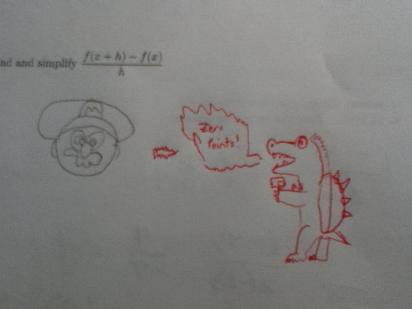I’ve been grading a lot of exams lately, so I thought that I’d take a few minutes to write out in words how I grade.
My tests usually have two or three questions per page, with their name only appearing on an attached cover sheet. I start the grading process by flipping over all the tests so I don’t see any names, and shuffling the stack. I then start grading one page at a time, every exam’s last page, then second to last, etc…
For each individual page, I mark all the obviously correct answers and set aside all the questions which require more than a moment or so to think about.
After getting through the whole stack, I compare the two stacks — did most people get it right? Did only a handful of people get it?
At this point, I update the rubric for this page. For example, the question “Expand in terms of
and
” really testing? On last week’s test, many pre-calc students kept missing the negative sign you need to distribute:
To me, what I’m really testing is the ability to notice and use all three of the quotient, product, and power rules for logarithms. Distributing the negative is great, but in this context, it’s the least important part. I decided that the students who got almost the right answer could get full marks (while simultaneously thinking, “Damn! I need to work more examples like this in class” and “This question should have been worth more points to account for this…”).
It’s not a perfect system, but so far it’s working for me.
